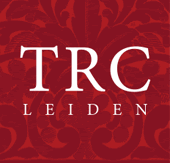At the beginning of the twenty-first century, various types of patterns were being used to decorate appliqué panels. The main forms are geometric or Islamic, calligraphic, and Pharaonic, as well as folklore and daily life.
Geometric or Islamic: Traditional geometric designs are used for locally used tents and so forth. These are regarded by many as the traditional form and are the style most commonly copied on printed designs. It is likely that the designs for the geometric appliqués derived from the marble inlay patterns to be found on the walls and floors of Cairo’s medieval mosques.
 Appliqué panel from the Street of the Tentmakers, Cairo, Egypt (TRC 2014.0818), showing a text written in the shape of a bird. For more information, click on the illustration.Calligraphic: A few of the more skilled craftsmen make appliqués based on traditional Islamic texts, especially those from the Koran. It is likely that these large panels are made for wall hangings decorating mosques or public buildings, as well as flags and banners. Some of these texts are in an Arabic form (often copying tile designs), others are based on Ottoman Turkish patterns.
Appliqué panel from the Street of the Tentmakers, Cairo, Egypt (TRC 2014.0818), showing a text written in the shape of a bird. For more information, click on the illustration.Calligraphic: A few of the more skilled craftsmen make appliqués based on traditional Islamic texts, especially those from the Koran. It is likely that these large panels are made for wall hangings decorating mosques or public buildings, as well as flags and banners. Some of these texts are in an Arabic form (often copying tile designs), others are based on Ottoman Turkish patterns.

At the end of the twentieth century, finely worked panels with fishes, birds with sometimes over a hundred birds on one panel and butterflies have become more widely available. These panels were originally influenced by Pharaonic tomb paintings, but have gradually become more ‘independent’ forms.
Another style that was added to the Street repertoire at the end of the twentieth century was that of the lotus. This is a geometric pattern based on stylised lotus flowers. Due to the intricate nature of the design, these panels tend to be worked in a much finer cotton material than the geometric panels intended for use for tents or as wall hangings.

The Ramses Wissa Wassef Art Center was set up in 1951 in Cairo by Ramses Wissa Wassef (1911-1974), an architect. He set up the school with the aim of teaching children design, art and tapestry making as a means for them to express their creativity and when older, to earn a living. The Wissa Wassef school was a great success and since then there have been many copies of this style and approach to design and art, including embroidery.
In addition, by the end of the twentieth century, subjects such as Goha (a fool with a unique form of wisdom, who appears in various forms of Egyptian folk literature since the eighth century; see illustration), Nubian musicians playing various instruments, as well as whirling dervishes, have also become themes on appliqué panels.

